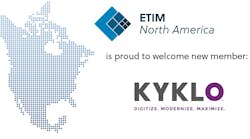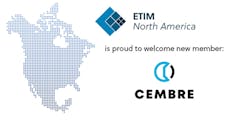The future for online technology in the electrical distribution world is not only in providing up-to-date information around the clock, it's also in providing up-to-date technology wherever the customer is at any given point in time.
GE surveys indicate that 39 percent of its employees and electrical distribution customers use a mobile device for daily business purposes. That number is escalating rapidly and there is no turning back.
“Mobility and flexibility will play a more crucial role than just instant access anytime,” says Kate Johnston, marketing manager for GE's Electrical Distribution Business. “It will be instant access, anytime, anywhere.”
“People in today's electrical distribution industry and their end-users want a much faster turn-around time,” she said. “They are on a job site or at a customer's office and, with new technologies, they need and expect answers fast.”
GE introduced its EliteNet Mobile device last year for precisely that purpose. The mobile web tool gives customers immediate access to price, availability and order status from the palm of their hand. Users include distributor sales teams, project managers, branch managers and owners who are frequently out of the office and need to stay on top of information. It's also been a big assist to the manufacturer's own sales force, which needs the same data.
New technologies and communication tools are driving several emerging trends in electrical distribution that will change the shape of business relationships in the channel much as the web did over the last decade.
One of these key emerging technologies is building information modeling (BIM), which provides digital 3-D modeling capabilities for projects to ensure more precision and efficiencies driven by less rework, offsite pre-production options and fewer change orders. Use of these modeling technologies is expected to spread rapidly, as some states are already requiring 3-D modeling with initial bids. In a recent McGraw Hill industry survey, 42 percent of people not using BIM today believe it will be highly or very highly important to the industry in five years.
BIM, in its constantly-developing form, is revolutionizing project management and dramatically changing the way things have been done in the past. It offers inherent productivity, budget control and construction project quality benefits.
Another trend to watch: Enterprise social networking to enhance project collaboration within the construction process. In the future, distributors and their customers will use social networking on the enterprise level that will enter the workflow to enhance project collaboration and streamline communication.
The channel today is very linear and information flow is primarily between manufacturers and distributors, distributors and contractors, and contractors and general contractors. Those groups also use the channel to communicate with the end user. Online collaboration allows for a more integrated team approach to reach better solutions faster and easier.
What remains timeless as it was 100 years ago is the need for customer support. Customers, Johnston says, are entitled to good service, care and technical support. “The human interface can never be eliminated,” she says. “But the process can be greatly enhanced through advancements in online technology.”
Angela Strosnider with Watt + Co. LLC is a public relations representative for GE Electrical Distribution.








